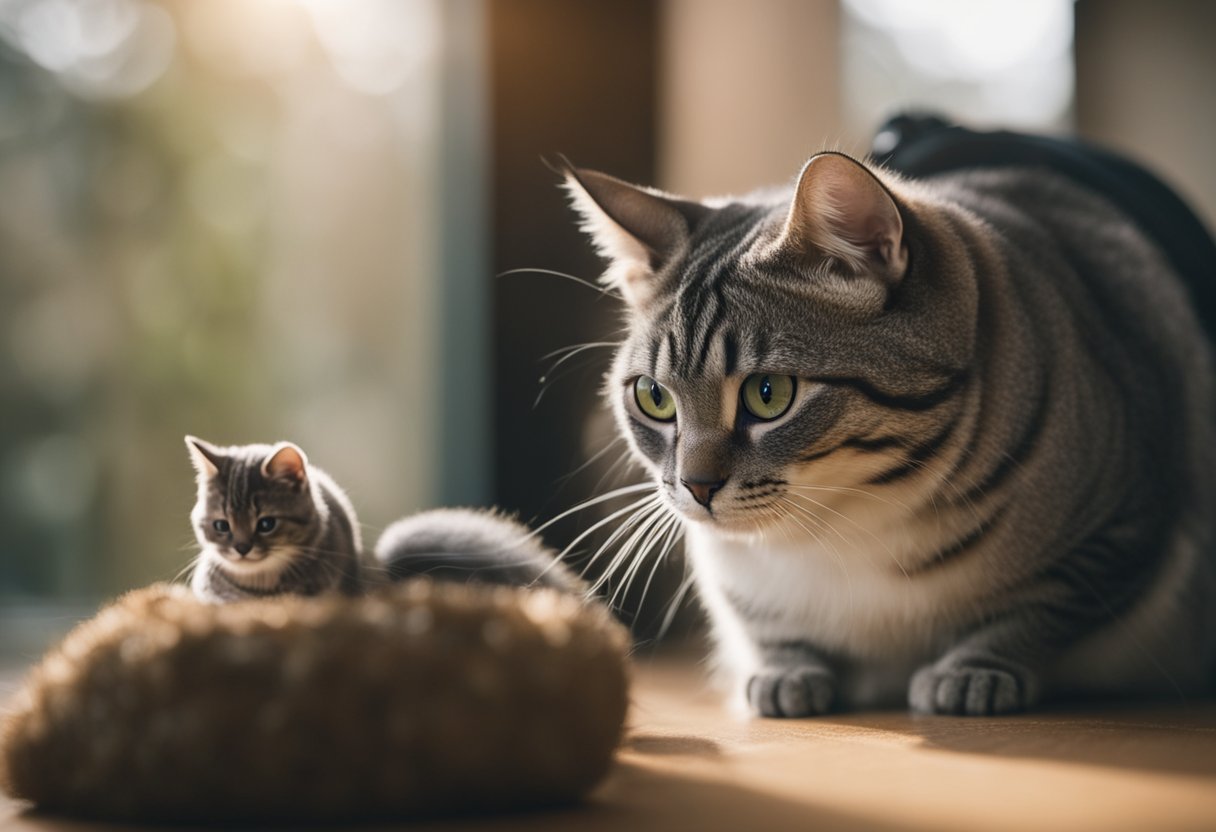Do Cats Eat Chinchillas? Understanding the Risks and Behaviors
Cats are natural hunters, and their instincts often guide their actions. You may wonder if your cat would see a chinchilla as a potential snack. While it is possible for a cat to eat a chinchilla, it is not common due to their typical hunting behaviors and prey preferences.

Understanding the relationship between cats and chinchillas is important for pet owners. Cats generally do not view chinchillas as food, especially if they are well-fed. However, their predatory instincts can lead to aggressive behavior, putting the chinchilla at risk. It is vital to manage interactions between these two pets carefully.
Key Takeaways
- Cats may have predatory instincts but usually do not eat chinchillas.
- Interactions between cats and chinchillas can lead to stress for the chinchilla.
- Keeping these pets in separate spaces can help avoid conflicts.
Understanding Feline Dietary Behaviors

Cats have unique dietary behaviors shaped by their instincts and preferences. Understanding these factors can help you cater to your cat’s needs and ensure their health.
Predatory Instincts in Cats
Your cat’s predatory instincts are strong. As natural hunters, cats have evolved to chase, catch, and consume small animals. This instinct is rooted in their biology.
When you see your cat pouncing at toys or stalking around the house, it’s showcasing a behavior that mirrors hunting. This drive can make smaller pets, like chinchillas, appear as potential prey.
Even if your cat is well-fed, these instincts can still motivate them to chase after anything that resembles prey. This suggests that the act of hunting satisfies their natural urges, not just the need for food.
Common Dietary Preferences of Cats
Cats are obligate carnivores, which means they require animal proteins for optimal health. Their diets must mainly consist of meat, which provides essential nutrients that they cannot obtain from plant sources.
You may notice that your cat shows a preference for certain meats, like chicken or fish. These proteins offer crucial amino acids, fatty acids, and vitamins.
Additionally, cats tend to prefer moist foods over dry ones. This preference can be tied to their natural hunting habits, where fresh kills are more appealing than dehydrated offerings.
Factors Influencing Feline Prey Choices
Several factors affect what your cat may choose to chase or play with. First, the size and movement of the prey play a key role. Small, fast-moving animals attract your cat more than larger, slower ones.
Secondly, individual personality influences these choices. Some cats are more adventurous while others may focus on familiar targets. If your cat has been exposed to small animals, they may find those more stimulating to hunt.
Lastly, environmental factors can shape your cat’s preferences. Cats that spend more time outdoors may have different experiences and predation habits than those that stay indoors. Your cat’s surroundings can greatly influence its hunting behaviors and choices.
Interactions Between Cats and Chinchillas

Understanding how cats and chinchillas interact is essential for pet owners. Their natural instincts can lead to dangerous situations, so it’s important to be aware of their behaviors and take necessary precautions.
Behavioral Dynamics in Multi-Species Households
Cats are natural predators, while chinchillas are prey animals. This difference in instinct can create tension in your home.
When living together, a cat may see a chinchilla as a toy or hunting target. This behavior can lead to stressful situations for your chinchilla. Even harmless playful antics, like swiping or chasing, can result in serious injury.
To promote a peaceful household, provide separate spaces for each pet. Make sure your chinchilla has a secure and comfortable habitat that a cat cannot access.
Understanding the social behaviors of both animals is key. Cats are curious and may try to engage with chinchillas, but it’s important to supervise all interactions closely.
Safety Measures for Chinchillas in Feline-Accessible Areas
If you have both cats and chinchillas, safety is a top priority. First, ensure your chinchilla’s living area is out of reach from your cat. Use high shelves or secure cages with sturdy locks.
When allowing any interaction, supervise closely. Be prepared to separate them immediately if aggressive behavior occurs.
Consider creating a barrier between them during playtime. This could be a separate room for the chinchilla or a secure playpen.
Also, keep toys or items that might attract the cat away from the chinchilla’s area. Avoid leaving them alone, even for a short time.
Resources
For more detailed information about keeping cats and chinchillas together, refer to the following resources:
- Do Cats Get Along With Chinchillas? This guide discusses compatibility issues and offers tips on managing interactions. Read more at Berry Patch Farms.
- Chinchillas and Cats provides critical insights into the relationship dynamics. Learn more at Planet Chinchilla.
- Do Cats Eat Chinchillas explores the dietary habits of cats and their predatory instincts. This information can be found at Vet Explains Pets.
Equipping yourself with the right knowledge can help ensure a safe environment for both pets.
Frequently Asked Questions

When considering whether cats can coexist with chinchillas, it’s important to look at various factors that affect their interactions. This includes safety concerns, natural behaviors, and the right introduction techniques to ensure both pets can thrive in the same environment.
Can chinchillas and cats safely coexist in the same household?
Chinchillas and cats generally should not coexist in the same household. Cats have strong predatory instincts and may view chinchillas as prey. This can lead to stress and potential harm to the chinchilla.
Are there any risks to chinchillas when living alongside cats?
Yes, there are significant risks. Cats can unintentionally injure chinchillas through playful swiping or aggressive behavior. Even if your cat does not intend to harm, the size and agility of a cat pose a danger to a small animal like a chinchilla.
How should a pet owner introduce a chinchilla to a resident cat?
Introducing a chinchilla to a cat should be done gradually and carefully. Keep the chinchilla in a secure cage during initial encounters. Monitor the cat’s behavior and only allow brief, supervised interactions.
What precautions should be taken if you have both cats and chinchillas as pets?
If you have both, always keep the chinchilla in a safe and secure enclosure. Limit the time they spend in the same room. Make sure to provide plenty of hiding spots for the chinchilla to retreat to if it feels threatened.
Do chinchillas exhibit any natural defense mechanisms when threatened by cats?
Chinchillas may freeze or hide when they sense danger. They rely on their agility to escape quickly. Their thick fur also serves as protection against bites, but this does not mean they are safe from a predatory cat.
How can a pet owner ensure the well-being of both chinchillas and cats in a multi-pet environment?
To ensure the well-being of both pets, create separate living spaces for each. Set firm boundaries and supervise all interactions. Provide enrichment for both animals to reduce stress and keep them engaged in their environments.

